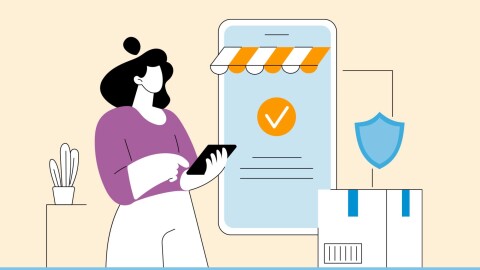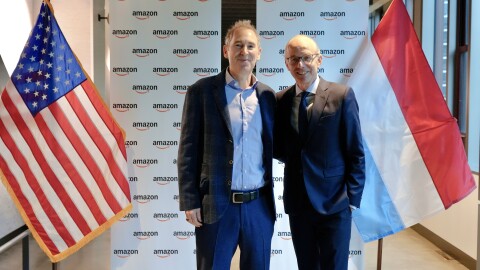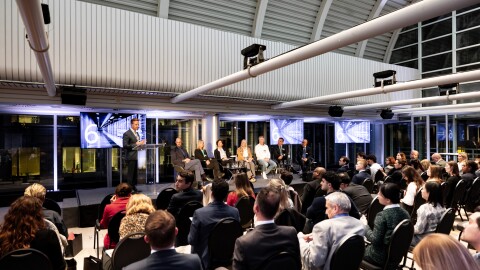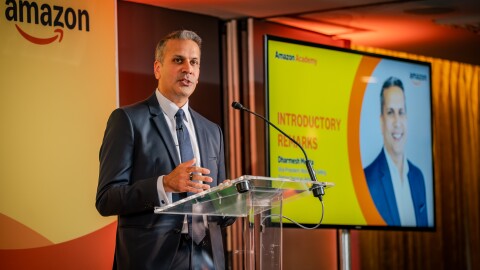Amazon's vision is to be Earth's most customer-centric company, which means making our devices and services accessible to everyone. We have pioneered accessibility features across our products and services for over a decade and our commitment to accessibility is deeply rooted in our customer-obsessed culture. For us, this is more than meeting requirements: it's about staying true to our mission of serving every customer.
We design with inclusivity at the forefront, making our products and services accessible to all customers. By integrating new technologies, such as AI, we are able to create solutions that enhance the experience for all customers, including those with specific accessibility needs. This shows that when accessibility is treated not as an afterthought but as a core design principle, technology can truly become a force for inclusion.
“More than 100 million people have disabilities in Europe," said Peter Korn, Director of Accessibility for Amazon Devices. "What I love most about this work is how it embodies one of Amazon's core principles: Customer Obsession. Building products customers love means including them in the process, not only by talking directly with customers with accessibility needs, including the elderly or with disabilities. Our culture of inclusion is also reflected in the many people with disabilities who work throughout Amazon in diverse roles –including our product teams."
Accessibility of Amazon devices
Amazon works to make its devices accessible to everyone. For example, since its launch in 2014, Alexa, the voice-powered assistant, has transformed how people with vision loss or mobility impairments interact with technology.
Today, Alexa and Echo devices offer several capabilities helping people be more connected, more entertained, and more independent. For example, VoiceView is a screen reader included with Kindle devices, Fire TV and Echo devices with a screen: it allows those who are blind or low vision to use gestures to navigate the device while VoiceView reads aloud the actions made on screen. Echo devices offer several visual accessibility features. Screen Magnifier and Color Correction settings enhance visual accessibility. For audio content, captioning features convert speech and sound into readable text. Additionally, Closed Captioning displays text for video broadcasts, and customers can customize how this text appears on supported content.
On Echo Show devices, Alexa Captioning shows captions for Alexa responses, and Preferred Speaking Rate controls the speed of Alexa responses whilst Call Captioning displays captions for Alexa calls. The Show and Tell feature can identify household grocery items which might be hard to distinguish through touch alone: customers simply say, “Alexa, what am I holding?” or “Alexa, what’s in my hand?” and Alexa will help to identify the item through advanced computer vision and machine learning technologies for object recognition.

On the Fire TV front, Screen Magnifier maintains context while zooming – a significant improvement over traditional magnification tools that can disorient users. Another unique accessibility feature on Fire TV is Text Banner which consolidates on-screen text into a compact, customisable, written banner that appears in a fixed location on the screen. This feature is especially important for customers with visual impairments, like retinitis pigmentosa, macular degeneration, and other forms of vision loss resulting in a limited field of view.
Our long-standing commitment to accessibility naturally applies to the reading experiences we provide through Kindle devices and the Kindle app. We have continued to expand accessibility features to assist millions of readers worldwide with a wide range of needs, including cognitive or mobility disabilities and challenges with comprehension and readability.
The Assistive Reader combines text-to-speech with synchronized highlighting, making books more accessible to people with dyslexia or others whose comprehension improves by listening to text that is read aloud. The Reading Ruler helps users maintain their place, while customisable fonts, spacing, and colours adapt to individual preferences.
Accessible Shopping
At Amazon, an accessible shopping experience is more than just a well-structured webpage. It’s an experience that simplifies the way people shop and we want to make it delightful to use for every customer. With the Navigation Assistant and Product Summary, keyboard-only and screen reader users now have the ability to shop more efficiently, showing that accessibility and convenience go hand in hand.
Another example of accessible shopping and delivery experiences takes place after a customer places an order: they can have it delivered to one of the many Amazon Lockers in cities across Europe – which, since 2018, support both Lower Locker Slot selection for customers who may be using a wheelchair or scooter and cannot easily reach the upper locker slot, as well as offer an audio jack and complete spoken interface for customers who are blind or low vision.

Accessibility through Amazon services, like Prime Video
Prime Video leads the streaming industry in accessibility. It is proud to offer the largest catalogue of audio-described titles, in up to five European languages (aside from English) ensuring viewers who are blind or have low vision don't miss crucial visual elements and we have the largest English audio-described catalogue in the EU.
The innovative Dialogue Boost feature uses AI to enhance dialogue clarity in seven languages, benefiting viewers with hearing loss without affecting background audio. And we’ve scanned over 2 million distinct videos available with Prime Video for the potential to trigger photosensitive seizures, adding a warning at the start of playback of those titles and barring them from inclusion in auto-played movie previews.
The other facets of Accessibility: packaging and support
Accessibility is more than making our products and services accessible. It includes ensuring that information about our products is accessible. It includes ensuring that customers with disabilities can reach customer support staff who understand disability, accessibility, and the accessible features of our products and services – whether they are asking to return a product, or wanting to learn how to pair their hearing aids to one of our Fire TV devices.
That is why Amazon has launched products with a tactile-embossed quick start guide in the box – outlining a QR code that takes customers to a page with highly accessible documentation for that product, in the languages of the countries that product is shipped to. Extensive user studies with customers who are blind or low vision validated this design as being easily discovered and useful.
Earlier this year we completed our expansion of dedicated accessibility customer service for customers with disabilities. In the EU this now covers: Belgium, France, Germany, Ireland, Italy, Netherlands, Poland, Spain, and Sweden. This service is staffed 24/7 with agents who have been trained in disability, in the way that customers with disabilities use access features and assistive technologies in their shopping journeys, and in all of the accessibility features of our devices and services and our content – whether a Kindle book, a Prime Video title, or Alexa.
It is deeply important to Amazon that the over 100 million Europeans with disabilities find Amazon to be among the most accessible companies to engage with. It remains Day 1 for us, and over the coming years we will continue to innovate on behalf of all our customers.












